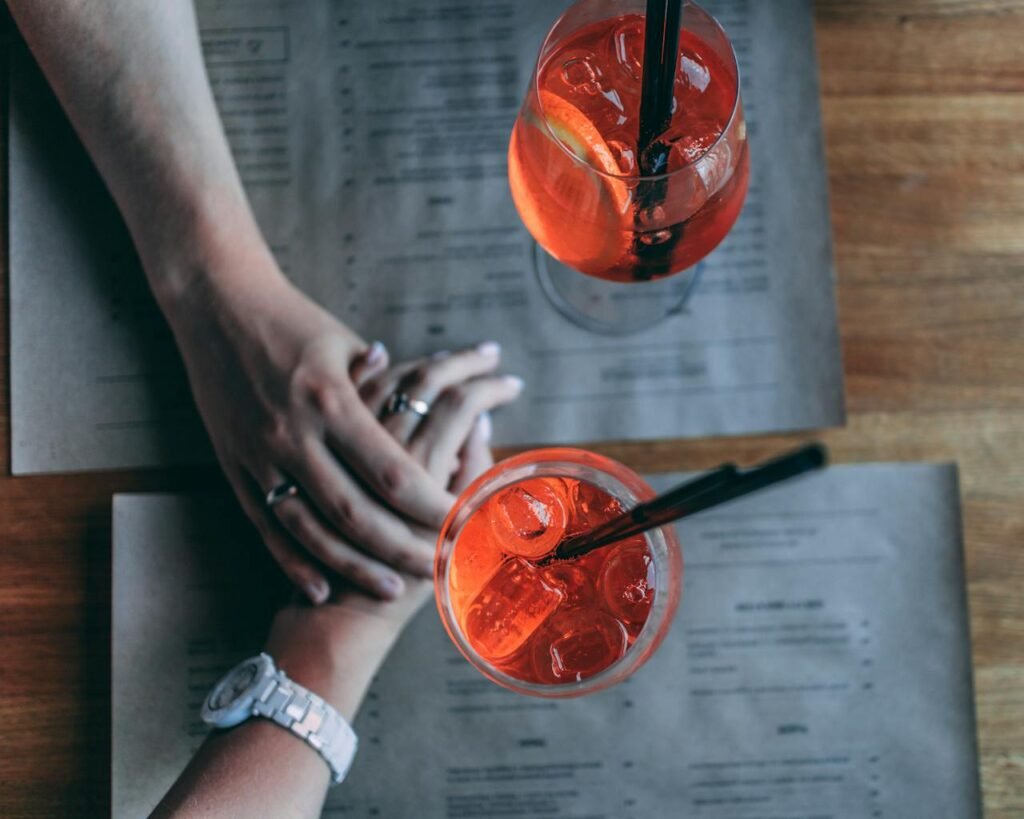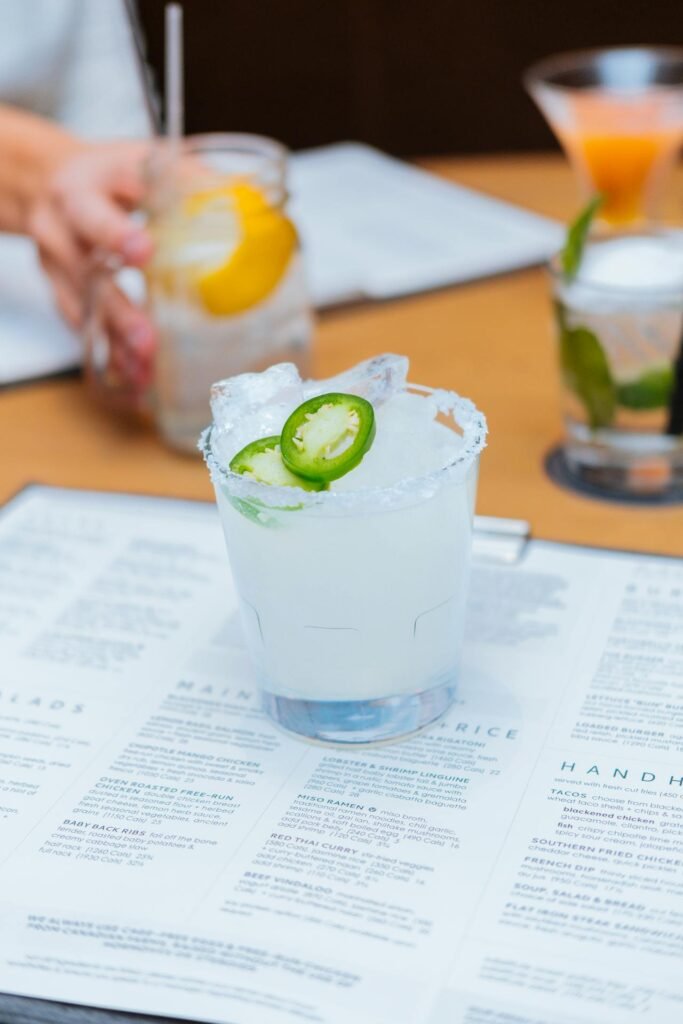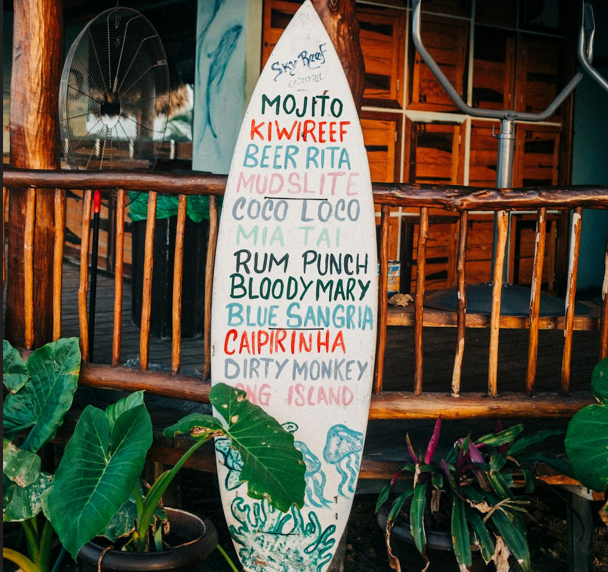The Menu is Everything
Whether you are a bartender, a hotelier, or anyone else, you must understand that the cocktail menu is a bar or restaurant’s way of telling the guests who they are and what they are all about. Since more than 50% of guests will order from the cocktail menu, it’s important to understand how they work and what should be included. When creating a cocktail menu, it’s important to think about it “talking” for you. What do you want to say to a guest even if you don’t have time to stand in front of them and say it? You can tell your guest about your concept, your skill level, your philosophy of flavor and so much more, just through your menu!
The most important part of designing your menu masterpiece is knowing what kind of establishment you are and staying true to that. Be honest and keep it real.
Creating a Cocktail Menu: Different Bars, Different Menus
There are many different types of restaurants and bars out there, and they all have some kind of menu. Some bars can swing from one type of spot to another depending on the night of the week. There’s the “Club-steraunt,” or the quiet neighborhood spot that becomes a zoo on trivia night. Your job as a hotelier is to have the right menu to cater to your crowd, all while not overwhelming your staff. Keep in mind before creating a cocktail menu, to know for which of the above venues will it be.
- Restaurant Bars – Size: These bars will typically have a menu of 6-12 drinks.
Most likely they will represent one cocktail per spirits category, in varying styles, depending on their concept. The food served and paired with your cocktails will be very important. Restaurant bars have the support of their kitchen, which means greater access to seasonal ingredients. - Neighborhood Bars – Size: Four to six simple drinks is ideal for the locals.
“Something for everyone” is the mantra for these spots. Crowd pleasing classic cocktails and variations on classic make it easy for guests to focus on having a good time. Special nights, happy hours, and drink features can keep things interesting and in season! - Sports Bars – Size: Keep it tight- four drinks alongside the beer menu.
Beer tends to rule at sports bars, so think about signature boilermakers, margaritas, shots, and bloody mary’s to fill in the gaps for creating a cocktail menu for a sports bar. These bars are a fun, lively place for gatherings. Keep the menu fun and easy to build so you can focus on speed and efficiency behind the bar. Cocktails that pair with the kitchen’s custom creations are a great way to upgrade a guest’s entire experience. - Clubs and Venues – Size: It depends on the venue. If F&B are part of the draw to your experience, then the menu can be more expansive. If poor musicians are your clientele, keep it small and cheap!
Plus-one style signature cocktails (like a house Gin and Tonic) will be quick to produce while maintaining a little bit of “something unique.” With the right operator, having a cocktail on tap is a great way to offer something elevated without worrying about consistency between bartenders. - Pools and Outdoor – Size: Again, this depends on the draw of food and beverage.
Hotel and resort pools can support more extensive menus. Keeping it tight allows for better quality control. We think the magic number is no more than eight drinks. Seeing a frozen drink machine whirring behind the bar makes the sale almost automatically. Think about how you can use each machine for more than one drink- like in a Miami Vice or a beer/frozen margarita. Also consider long drinks and spritzes for day drinking. - Cocktail Bars – Size: Larger menus at these bars can be great for niche products and experimenting, but not volume.
Guests are here for the drinks, so it’s your call to determine how far down the rabbit hole you want to take them. These bars are a great place to let creativity shine. The crowds that come to them are often open to trying something new, but no one likes to feel dumb. Use your menu to help and educate, not to make folks feel inferior! - Hotel Bars – Size: Expect to be doing volume at hotel bars over long periods with lots of different staff. Hotels are a beast! These menus need to be bulletproof, easy to execute and should speak to the locality. We think 6-8 drinks is perfect. Events held at hotels tend to trickle down into the lobby bar. Be kind and batch your cocktails for efficiency.
Menu Design
So, as you’ve understood so far that when it comes for creating a cocktail menu, first we must know what kind of bar we are dealing with here are the points to get your best foot forward with the menu.
Design is Number One

Design and placement will guide the readers eye to where you want them to be. Remember, you are trying to communicate to them even without a body present. Be clear! If a menu is too busy or cluttered the customer will most often become overwhelmed and stop reading. Bad news, they’ll never try your drinks. You want to be as inviting as you can be. The menu is not only your place to shine and show them what your bar is all about, it’s about making the guest feel welcome.
Some Finer Points
Most bars will list cocktails from lightest to heaviest. This puts brown spirits at a disadvantage. Put the crowd pleasers at the top no matter what the base. While it may seem fun to have a unique font for a menu- it is always best to have it be clear and easy to read. Especially if the space is dimly lit. And if it seems small in daylight, it’ll be way too small at night. While guests will ALWAYS order drinks with clever names, be aware of the joke you’re making. Offending someone on a printed menu is pretty difficult to come back from.
Make the Most of Being Local
Are there “Classic” drinks specific to your region? (we see you Brandy Old Fashioned in Wisconsin). Play up that twist. Local products like jam, honey, and maple syrups promote a sense of community and sustainable practice. Naming cocktails for local teams, icons or locations establishes pride in where you are. Go Sports! The consumer is knowledgeable. Play to your people!
Seasonality
Guests understand the season in their drink ingredients. When it comes to creating a cocktail menu, be sure that you’re changing the menu at the very least four times per year-even if your bar doesn’t have traditional “seasons.” If fresh products are not an option think of shelf stable ingredients that are within the season. Bitters, Liqueurs, Preserves, Flavored Vinegars, Dried Fruits, Herbs, Teas and Vegetables. If you’re going to have a cocktail year-round, be sure that those ingredients aren’t affected seasonally.
Pricing
Pricing is another important factor to consider when it comes to creating a cocktail menu. No one likes to talk about money, but a bar is a business and needs to be treated as such. On average expect the beverage cost to bar/restaurant to not exceed 20% of the selling price. Having consistent prices across all cocktails allows less expensive drinks to subsidize more expensive drinks. Be aware prices should be reflective of comparable establishments.
Tip: If you are selling a cocktail that is more expensive than others, place it at the top so other drinks looks more reasonably priced.
In the end…

Creating a cocktail menu is very important for a bar or restaurant. It helps the guests to quickly see what drinks are available and a good menu can make your place look professional and exciting. It shows your creativity and style. When you have a cocktail menu, you can highlight your best drinks. You can also offer a mix of choices, like sweet, sour, or strong drinks, so everyone finds something they like. A clear menu helps guests decide faster, making service easier and faster.
Lastly, a well-made cocktail menu helps your brand stand out. It shows your care for quality and detail. People will remember your bar or restaurant because of the unique drinks they enjoy. We could talk all day about what drinks to feature, but your bar is not our bar. Listen to your guests. Pay attention to cost. Be present in the seasons. Make yourself happy, but not at the expense of others. Don’t yuck someone else’s yum.
All the images in this article are from Pixabay (not copyrighted and free commercial use).


